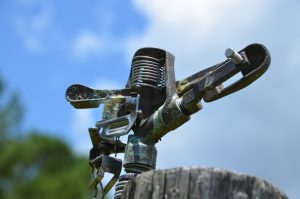July’s hot summer weather has given way to August’s 31 days of what will likely be temperatures and humidity equally elevated and intense. Wishes for November’s cooler thermometer reading are already creeping into daily conversations. The lawns and gardens in Wakulla County have rains as a mitigating factor to counteract the wilting potential of normal to excessive temperature readings. Unfortunately the arrival of water from above is not on a set or easily predictable schedule.
Traditionally, summer is the wettest season in Florida, with more than half of the annual rainfall occurring during the June to September “wet season”. Florida’s highest average annual rainfall occurs in the Panhandle with averages exceeding 60 inches per year. The Pensacola and Tallahassee weather stations are listed among the ten “wettest” stations in the nation. Still, this pattern of seasonal precipitation can vary greatly between locations, years and even days. This variability often results in the need to water the lawn, landscape and garden. By following a few guidelines, you can produce the best results for plants under stress and conserve a vital and limited resource.
It is most efficient to apply water between 5:00 a.m. and 10:00 a.m. for several reasons. Only water that is in contact with roots can be absorbed by the plant. If water is applied after 10:00 a.m., a substantial portion of it will evaporate before it reaches the roots; more will then need to be applied and this resource’s productivity will be reduced. Never water late in the afternoon as evaporation will still be a problem, and wet turf and plants will invite a variety of fungal diseases to flourish as night settles.

In the case of landscapes and gardens, water should be applied only when the moisture in the root zone system has been depleted to an unacceptable level, usually by 1/2 to 2/3 of the stored soil-water. There are several ways to determine when the soil-water reservoir has been depleted beyond an acceptable level. The simplest method is a visual inspection of the turf or plants. Common symptoms of water stress include leaf color changes to a bluish-gray tint, footprints which linger long after being pressed into the grass and curled or folded leaf blades. Be sure the sprinklers are delivering water to the target area as water which misses the soil and is applied to hard surfaces such as driveways and sidewalks will be wasted. It also may pose an environmental problem in the form of runoff. Surface runoff that flows past the landscape will usually reach streams, ponds, or the Gulf of Mexico. If it picks up pollutants along the way, they too will reach the surface water bodies.
Over watering can be just as damaging as too little water. Excessive irrigation water can infiltrate the ground and reach groundwater aquifers. This issue is complicated when groundwater runs close to the surface. Excessive nutrients or pollutants can be discharged into surface bodies or move vertically into the deeper land layers. The connected springs and sinkholes in Wakulla County make the movement of surface water a common concern. Responsible and efficient irrigation will have positive effects far beyond the front yard.
To learn more about the effective use of water in Wakulla County’s landscapes, contact your UF/IFAS Wakulla Extension Office at 850-926-3931 or http://wakulla.ifas.ufl.edu/
 0
0
